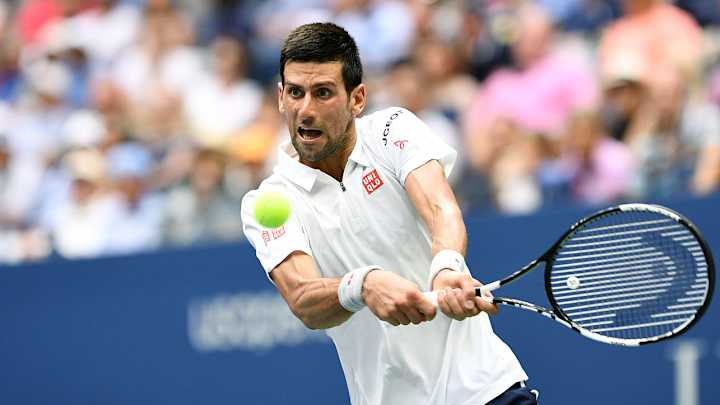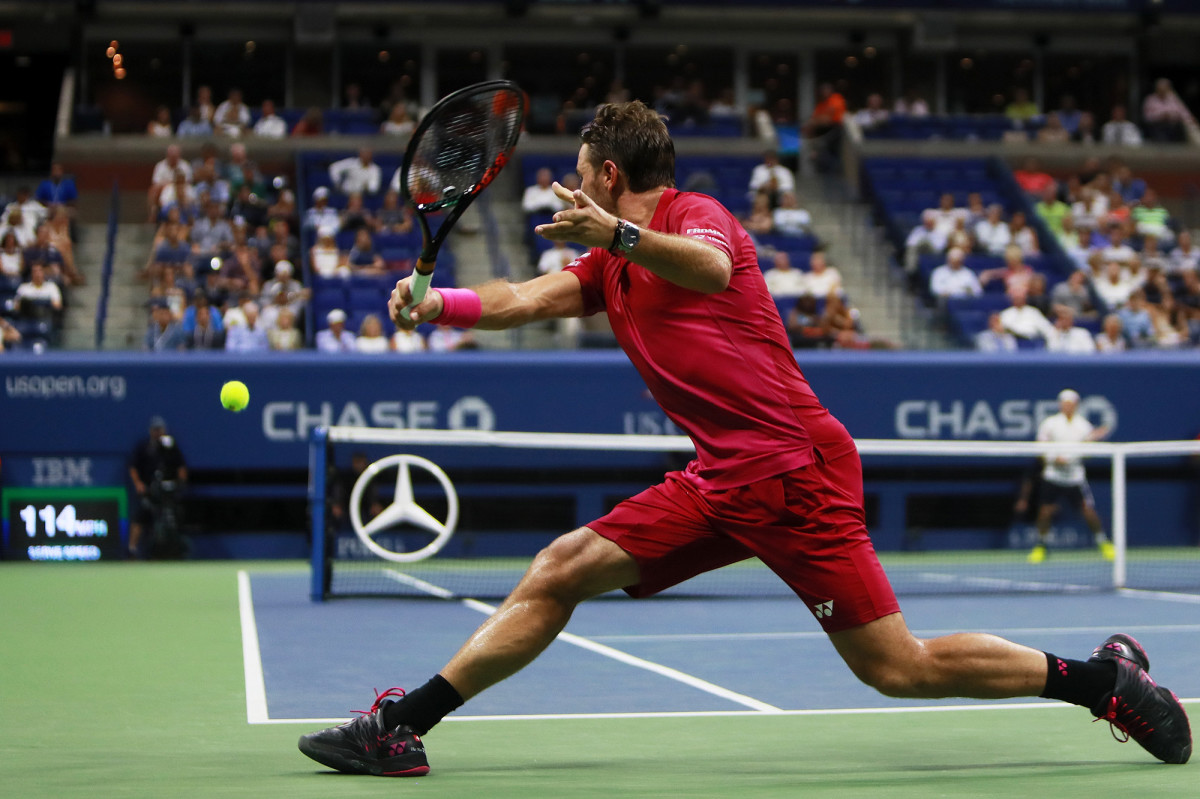No. 1 Djokovic will face toughest test against No. 3 Wawrinka in U.S. Open final

NEW YORK – At the moment, Novak Djokovic has no true rival. He has won six of the last nine Grand Slam events, and he’s won 12 major titles over his career. His primary foes in Grand Slams have been Andy Murray and Roger Federer, but neither has beaten Djokovic at a major since Murray’s first Wimbledon title in 2013. Longtime rival Rafael Nadal is diminished.
Then there’s Stan Wawrinka. He’s not exactly Djokovic’s archrival, in the sense that he doesn’t have the trophy case to match Djokovic, but right now Wawrinka is probably Djokovic’s most compelling competition. It might be the most captivating matchup in men’s tennis. And on Sunday, they’ll meet in the 2016 U.S. Open final.
No. 1 Djokovic overcomes heat, oddities to beat Monfils and reach U.S. Open final
Wawrinka’s career is inexorably tied to Djokovic. In 2013, Wawrinka lost to Djokovic in a five-set Australian Open round of 16 marathon—a defeat, but the moment Wawrinka started believing he could beat a top player at a Grand Slam. A year later, Wawrinka and Djokovic met again at the Australian Open, this time in the quarterfinals. Again, it went five sets, but this time Wawrinka prevailed, on his way to his first Grand Slam title. And then there was Paris: In 2015, Djokovic was on the cusp of finally winning the French Open to complete the career Grand Slam. But Wawrinka, the No. 8 seed, notched the most memorable win of his career, a stunning upset of top-ranked Djokovic in four sets at Roland Garros.
At first glance, their rivalry seems lopsided. Djokovic has a 20-4 advantage over Wawrinka over his career. But Wawrinka might be the last player the World No. 1 would choose to play in a Grand Slam final. No player has tested Djokovic over the last few years at Slams more than Wawrinka. Since 2014, Wawrinka is 2-1 against Djokovic at majors, with his one loss coming in five sets at the 2015 Australian Open.
Stan Wawrinka beats Kei Nishikori to advance to U.S. Open final
“He's a big match player,” Djokovic said. “He loves to play in the big stage against big players, because that's when he, I think, elevates his level of performance in his game. Just gets much better.”
In Wawrinka, the No. 3 seed, Djokovic is likely to face his toughest test of the U.S. Open. Djokovic’s path to the semifinal was odd; he won twice by retirement and once by walkover. His semifinal, against Gael Monfils, was downright bizarre: Djokovic quickly went up 5–0 in the first set before Monfils started imitating a high school junior varsity pusher, lofting slice after slice at Djokovic, who couldn’t seem to figure it out. Djokovic won in four sets, but he never looked fully comfortable—and he received medical treatment on both of his shoulders, adding to his injury concerns.
Djokovic has played very little tennis this tournament, yet he’s limping into the final. And with Wawrinka peaking at just the right time, Djokovic should be prepared for a battle on Sunday.

Wawrinka will live and die by his signature one-handed backhand, which played a big role in beating Kei Nishikori in four sets on Friday. In his semifinal against Nishikori, Wawrinka aggressively chased winners with his backhand, ultimately tallying 10 backhand winners and 20 backhand unforced errors. It’s not that Wawrinka can’t win a match if he doesn’t hit his backhand well—he’s a balanced player with a very good serve and forehand—but his backhand gives him a unique weapon to use against Djokovic.
“He can hit angles really well with topspin,” Nishikori said.
Wawrinka’s backhand captures the beauty and power of the modern game. When he’s striking his backhand well, the ball seems to hang in the air for an extra second, as if it’s being propped up by a tee—long enough for Wawrinka to drive it with incredible topspin and precision toward either alley. It’s the Spanish Armada meets impressionism.
Gael Monfils defends unusual U.S. Open semis strategy after John McEnroe criticism
“When I play my best tennis my backhand is there, because that's where I put a lot on my game, on it,” Wawrinka said. “But it can happen that sometimes at the beginning of the match my backhand is not there and I need to find other solution.”
Djokovic, of course, is no ordinary opponent. He didn’t play particularly well on Friday, but was never seriously challenged by Monfils. That’s a good sign for Djokovic, of course, but the downside is that the World No. 1 hasn’t really been challenged at all over the last two weeks. Physically, this is good news for Djokovic, considering his current spate of injuries. But mentally? That’s less clear. Wawrinka, meanwhile, has beaten back challenges throughout the tournament. He saved a match point against Daniel Evans and came back to win in five sets. He toppled Juan Martin del Potro in the quarterfinals, then rallied to beat Nishikori in Friday’s semifinal. Under pressure, he has repeatedly delivered.
Novak Djokovic rips shirt off during U.S. Open semifinal match
Djokovic is the clear favorite. But Wawrinka has won his last 10 tournament finals, and he has played some of his best Grand Slam tennis against Djokovic. If recent history is any guide, there won’t be much to separate these two finalists.
“To play Novak, the No. 1 player, it's always really challenging,” Wawrinka said. “But we had some many big memories together, especially in Grand Slams, so it's going to be an excited match.”
You could call it a rivalry.
